
TurfPro editor, Laurence Gale, writes . . .
Grass growth is adversely affected by nature's wrath in the form of various biotic and abiotic stress factors. Water deficit is one of the major abiotic stresses, which adversely affects crop growth and yield. The recent period of hot sunny weather will have certainly had a detriment effect on many of our lawns.
Without water, they soon turn brown and in extreme cases can die. However, our UK climate tends to prevent this happening, due to the fact we are a small land mass surrounded by water - therefore it is often inevitable we soon see a change in the weather and receive a downpour, to revitalise our lawns (as recently clearly evidenced!)
A combination of watering, coupled with a selective weed and feeding regime will endeavour to keep our lawns in a good condition.
However, you should now be planning, or even started, your autumn lawn renovations, having sourced the relevant materials and machinery to facilitate the works.
The months of September and October are ideal times for this work.
So what is a good lawn?
A good lawn in the UK is typically characterised by several key features that reflect its health, appearance, and functionality. Here are some of the main attributes that constitute a good lawn in the UK:
Lush green colour
A vibrant, deep green colour is a sign of a healthy lawn. This indicates that the grass is receiving the right amount of nutrients, water, and sunlight.
Even coverage
A good lawn has even grass coverage without bare patches. This means the grass is growing uniformly across the entire lawn area. Regular overseeding and proper maintenance help achieve a dense and evenly covered lawn.
Weed-free
Minimal or no weeds are a hallmark of a well-maintained lawn. Common weeds such as dandelions, clover, and daisies can compete with grass for nutrients and sunlight. Regular mowing, selective weed killers, and proper lawn care practices help in maintaining a weed-free lawn.
Healthy grass variety
The choice of grass species is important. A good lawn in the UK often includes a mix of grass species like perennial ryegrass, fescues, and bentgrass, which are suitable for the UK’s climate. Different grass types provide resilience, durability, and aesthetic appeal to the lawn.
Good soil health
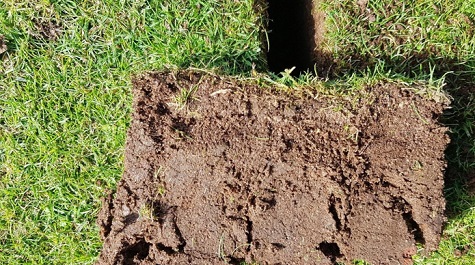
Healthy soil is crucial for a good lawn. It should be well-drained yet retain enough moisture to support grass growth. Regular aeration, top-dressing, and appropriate fertilisation improve soil structure and health.
Mowing height
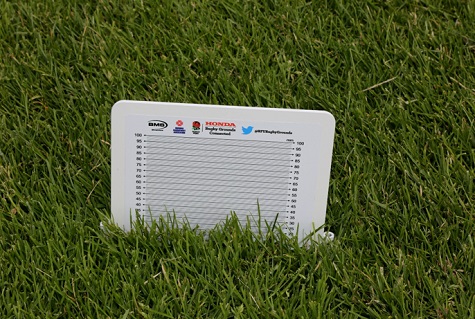
Regular mowing at the correct height encourages strong root growth and helps maintain the lawn’s appearance. For most lawns in the UK, a mowing height of about 2.5 to 4 cm (1 to 1.5 inches) is ideal, though this can vary depending on grass type and season.
Adequate watering
Even though the UK climate provides regular rainfall, there are periods when additional watering is necessary, especially during dry spells in summer. A good lawn is watered deeply and infrequently to encourage deep root growth.
Pest and disease management
A healthy lawn should be relatively free from pests and diseases. Common issues in the UK include fungal diseases like red thread and pests like chafer grubs. Regular monitoring, proper care, and appropriate treatments help keep these problems under control.
Proper Edging
Well-defined edges around the lawn enhance its appearance and help prevent grass from invading flower beds and pathways. Regular trimming and maintaining clear boundaries contribute to a neat, well-kept lawn.
In summary, a good lawn in the UK is one that is green, dense, even, and well-maintained, with minimal weeds, pests, and diseases. It should be able to withstand the UK’s variable climate and provide an aesthetically pleasing, functional outdoor space.
Renovations still necessary
However, having achieved all of the above it is still essential that you carry out an end of season renovation that includes the following tasks :-
Weed control may be dealt with prior to the renovation. Any accumulated moss growth should be dealt with by applying an approved moss killing chemical, wait for it to die, then remove by scarification.
A lawn may decline through a number of reasons - lack of cultural practices, drought, weeds, diseases, shade, poor soil, neglect, abuse and overuse.
Mowing:
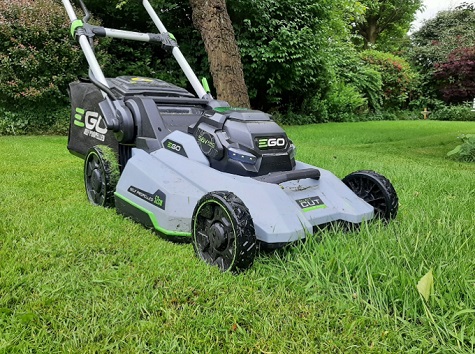
The grass is usually mowed prior to starting any renovation works. The objective of mowing is to clean and prepare the grass surface. Grass growth in spring can be uneven and varied. Mowing the grass to a uniform height will help prepare an even surface for scarification and topdressing operations.
Cuttings should be boxed off, and the height of cut will depend on the type of surface you are preparing. For fine lawns the cut may be down to between 10-15mm Cylinder or rotary mowers can be used as long as they are able to collect the cuttings.
Scarifiying:
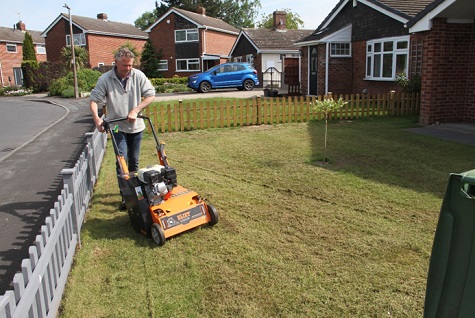
During growth the grass plant produces a lot of dead material above and below ground level.
Above ground (Thatch layer): dead and decaying leaf and root material develops and accumulates to form a thatch layer of matted material. This layer of thatch can create a microclimate that is detrimental to turf, preventing water infiltration and providing ideal conditions for fungal and disease establishment.
Below ground (Mat layer): root growth involves increased biomass of the root system and, like the grass shoots above the ground, some of this new matter dies back leaving a dead mass of root material which can often prevent and restrict new root growth and affect gaseous exchange in the soil. It is important to remove this debris.
Scarifying is the term used to remove this unwanted vegetation. There are many different ways and methods of scarifying lawns and turf surfaces. The process usually involves a raking / cutting action to clean out the thatch debris, and can be done manually using spring tine rakes or mechanically using specially designed rotorakes, verticutters and knife action machines.
There are many different types of machines designed and available for scarifying turf, all offering different cutting depths, with different power and speed variations, with and without collection boxes. Machines can come in many shapes and sizes, some are pedestrian, some tractor/ prime mover mounted.
The depth of penetration for effective scarifying must be through the mat layer and into the soil. For an effective, vigorous scarifying, the blade should be at least 3 mm wide. Scarifying in two directions, at an angle of less than 90 degrees, gives the most vigorous working. Scarifying at right angles has the tendency to cause severe damage, with the small squares of turf being ripped from the surface. To restore the playing surface after vigorous scarifying will require an application of top dressing materials to restore levels and provide a seed bed for grass seed.
Aeration:
Aeration is an important part of the renovation programme. Not only does aeration remedy any compaction problems by restoring and improving air movement in the soil profile, it also provides channels and openings for the top dressing materials to integrate, particularly if hollow coring or hollow tines have been used.
Depth of tines can vary between 100-200mm depending on the type of aerator being used.
Top Dressing:
The application of a good quality top dressing, in combination with a suitable aeration programmes, will go a long way to counter the ravages of wear / play.
Benefits of top dressing:-
There is a wide range of materials available for top dressing, ranging from straight sands, clays, loams and local soils materials through to purpose mixed rootzones combining clays, loams and sands. These mixes can be tailored to suit customers’ needs, and can range from 80/20, 70/30 and 60/40 sand/soil percentage mixes.
The success of top dressing will also be influenced by the amount applied and how well it has been worked into the turf surface. Applying too much dressing will have a detrimental effect, smothering out the turf and increasing the likelihood of disease, slow grass growth and, in some cases, will kill the turf.
Overseeding:
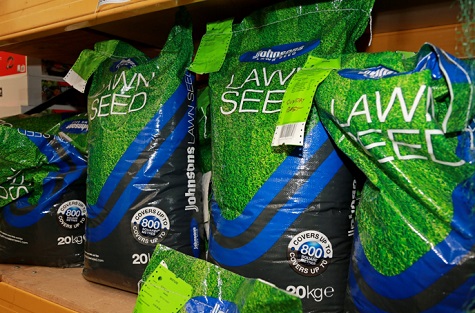
To re-establish grass cover, it is necessary to overseed the area with new grass seed. It is important to choose appropriate seed It is not cost effective to use cheap or old grass seed stock, as germination and establishment is likely to be poor. Buy your seed from a reputable company which specialises in developing and marketing quality grass seed mixtures. These seed varieties may be more expensive but they do guarantee quality and performance.
Most seed suppliers will recommend sowing rates but, as a rule of thumb, it will generally be about 35grams of seed per sq/m. Temperatures above 12°C, a moist, well-aerated seedbed, close seed/soil contact are primary requirements for rapid grass seed development.
Fertilising:
Prior to applying any fertilisers it is essential to obtain the nutrient and pH status of the soil. This can be achieved by sending soil samples to a soil laboratory which will carry out a nutrient analysis of the sample. Once obtained you will be able to choose a product that offers you the correct N P K fertiliser ratio for your soil.
These fertilisers can be supplied in granular or liquid form. Granular products tend to be more widely used because they are easier to handle and distribute. Over dosing or applying granular fertilisers without enough soil moisture being present may result in the grass becoming scorched, resulting in scarring or death of the grass plant. Fertiliser application is only effective if you ensure uniform coverage. Granular fertilisers can be applied with either a drop (gravity) spreader or a rotary (centrifugal) spreader.
Brushing / Dragmatting / Luting:
Once all top dressings, grass seed and fertiliser materials have been incorporated into/onto the surface, it is important to work the material into the profile by brushing, dragmatting or luting. These operations ensure the materials are worked in evenly, and prevent any excess material remaining on the top. This operation is best done when the surface is dry, enabling the material to distribute itself easily. Irrigation / watering:
To renovate successfully, adequate water must be available from seeding through to completion of germination. Try not to allow newly overseeded areas to dry out once watering has commenced. Initially, maintain a constantly moist seedbed with frequent waterings of short duration. As newly germinated seedlings begin growth, decrease the frequency, and increase the duration of watering to encourage deeper rooting.
Conclusion:
Lawn renovations is often a time consuming and expensive exercise. Successful renovation requires detailed planning and programming, to ensure the right materials and equipment are available and working throughout the renovation process.